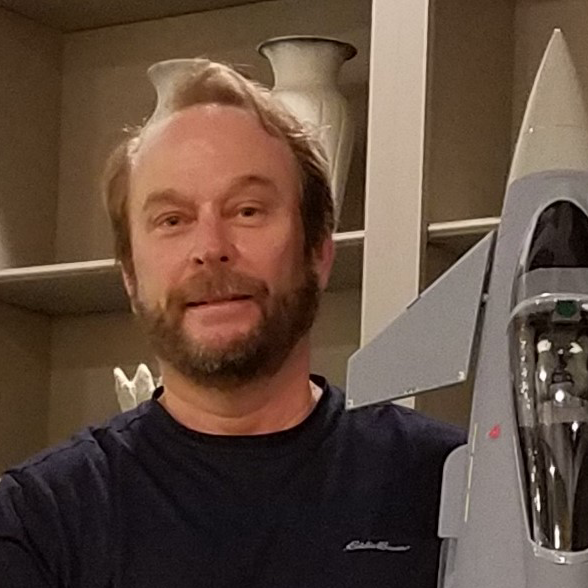Learn About The CRCC
Flying Site Rules
The AMA Safety Code will be enforced at all times. It is each member’s responsibility to keep current with new rules and changes to the old rules. It is also every member’s duty and responsibility to help promote safety at all times.
The CRCC requires all persons flying at our field located on the old summit land fill to comply with FAA rules on “small unmanned aircraft”.
(Information on the FAA public law 112-95 section 336 and the “special rule for model aircraft” may be found on the FAA web site https://www.faa.gov/uas/. A good summary may be found at this link http://knowbeforeyoufly.org/facts/.)
In addition to the AMA Safety Code, the following rules have been established by the Chattanooga Radio Control Club for persons flying at Summit Field: (Turbine aircraft safety and operation rules and practices supersede these rules if there is a conflict)
Summit Field Procedural Rules
- In accordance with our lease with the City of Chattanooga the main entrance gate to the field MUST remain locked at all times
- No flying with gasoline or glow engines before 9:00 AM.
- Non-AMA members under the age of 14 are not permitted in front of the shelter unless accompanied by a club member.
- Keep the field clean! Take your trash home, and clean up spilled fuel, drinks, and food
- Follow rules posted by the city at gate.
Flight Safety Rules
- Membership in the Academy of Model Aeronautics is mandatory for all pilots.
- Completion of the CRCC Pilot Instruction Program is required before soloing at Summit Field.
- Flyers using transmitters other than 2.4 ghz Spread Spectrum. Your current CRCC or AMA membership card must be on the frequency board BEFORE your radio is turned on. Remove your card from the board when you are no longer using that frequency and your radio is turned OFF.
- The following flight protocols must be observed (exceptions may be made for special events by the CD):
- Your airplane must face the runway while being started. Do not conduct extensive engine running, tuning, and break-in in the pit area.
- Before taxiing onto the runway, announce to other pilots that you are attempting to take off. Do not taxi in the pit area or behind other pilots.
- Take off in the direction of the established flight pattern. First aircraft up establishes the pattern unless the wind direction changes and forces a change in the pattern.
- Always fly in the direction of the established flight pattern.
- Pilots MUST use flight safety boxes when more than one pilot is flying.
- No flying BEHIND the flightline, as defined by the nearest edge of the runway, extending infinitely to the right and left.
- Absolutely NO flying BEYOND the landfill boundary road. Use special attention at the east (right) end of the runway due to the presence of homes that cannot be seen from the field.
- Before landing, call out to other pilots that you are attempting to land.
- After landing, clear the runway as quickly as possible.
- Once you have taxied clear of the runway, turn your engine off. Carry or pull your aircraft back into the pit area – do not taxi a running aircraft into the pit area.
- Only one runway will be considered active. An active runway is established by flyers present and may be changed by flyers present. Small orange cones are to be placed on asphalt runway when considered inactive. Grass runway may be used for an emergency landing however user must “call out” (for example “dead stick, landing on grass runway). When grass runway is active at no time is the paved runway to be used.
- Dogs or other pets are to be on a leash and at no times be in the model start up area or runway. Owners must pick up any waste. Due to strays running in the area it is recommended that dogs not be brought to the field.
- 3D flight that is to include being stationary over the paved runway must be coordinated with other flyers prior to take off.
- Park flyers may establish a flight area in the grass parking area south of the paved runway as safety conditions allow.
- A spotter is required if a. flyer is performing 3D flight over runway or b. when more than 3 models are in the air (may be subject to spotter availability)
- Flying is to end if city workers enter an overfly area defined as 300′ in front of the runway.
- At any time during a flight session any member may ask all flying to stop to discuss a safety or field rule violation that has occurred during the session.
- FPV flights must follow AMA guidelines regarding a spotter with “visual line of site” at all times.
Other guidelines/recommendations
- Club membership cards should be displayed while at field. On hat or shirt is recommended but may be on your equipment.
- Only club assigned flight instructors are allowed to train new pilots.
- Club members that bring visitors (AMA member or not), including children to the field are responsible for the actions of the visitor. This includes safety and adherence to the field rules.
- Gate lock is not to be left with all or part of the combination set.
- Keep the field clean. If you brought it take it with you when you leave. Only use the trash cans when necessary. All members are welcome to remove a bag of trash at any time.
- Any movement / alteration to facilities including tables and flight safety stands must be returned to position before leaving.
- Members that have not flown in a while may utilize a club instructor along with the club trainer to refresh their skills.
- Advertisements for a business that is supporting our club in some way may be posted after approval by the board of directors.
- Batteries (lipo, nimh, etc) are not to be discarded at the field.
- A transmitter cut off for all gas, electric, and nitro models is advised. (Ask for help if you are not familiar with how to do this)
- Flying on 2.4 MHz does not require use of frequency board.
- Members may approach a flyer that is not displaying their Club Card, introduce themselves and check for AMA and membership.
- Lost and found. Members should mark their equipment with AMA number or name to assist with returns of lost and found items. Found items will be stored inside shelter and reported on our mail list. Unclaimed items may be sold by the club at next swap meet.
- Club information will be distributed using the club mailing list email and posting on the web site. Members without access to email or the net need to work out how to get communications with another member.
- Inside gate remains open until we are told different by the city.
- Visiting AMA members are allowed to fly after their sponsor reviews the Club Rules. The pilot’s meeting at events covers this.
- Members are encouraged to be familiar with all manufacturers safety guidelines for operation and use of Lipo batteries, gas engines, nitro engines, electric motors and other equipment they are using in our hobby.
- Any member that wants to bring a contractor or any construction material for upgrade or repair of our runway or restructures must contact the President prior to any activity.
Numbers that
make us different
+
MEMBERS STRONG
ft.
ASPHALT RUNWAY
ft.
GRASS RUNWAY
ft.







